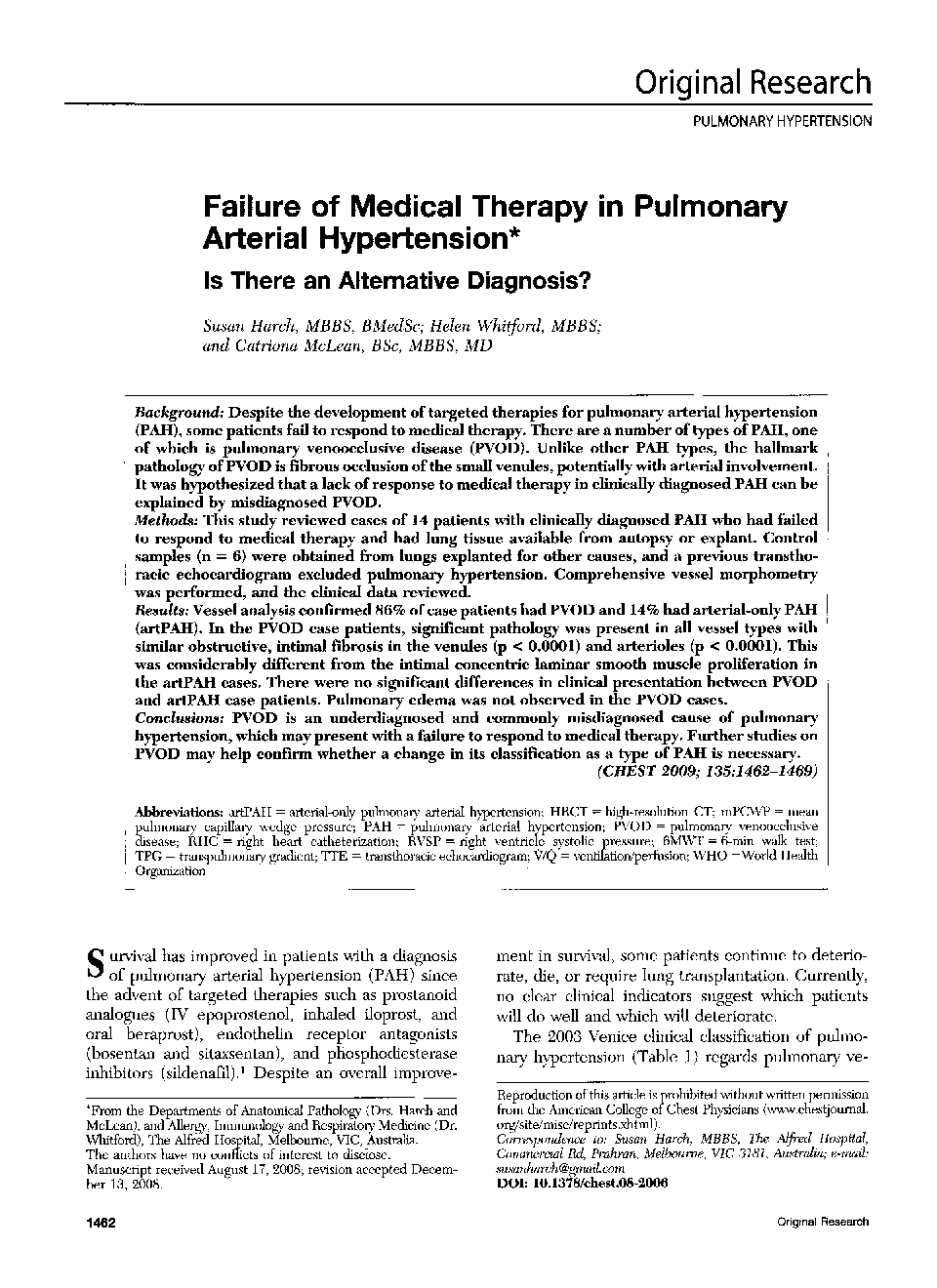| Article ID | Journal | Published Year | Pages | File Type |
|---|---|---|---|---|
| 2903422 | Chest | 2009 | 8 Pages |
BackgroundDespite the development of targeted therapies for pulmonary arterial hypertension (PAH), some patients fail to respond to medical therapy. There are a number of types of PAH, one of which is pulmonary venoocclusive disease (PVOD). Unlike other PAH types, the hallmark pathology of PVOD is fibrous occlusion of the small venules, potentially with arterial involvement. It was hypothesized that a lack of response to medical therapy in clinically diagnosed PAH can be explained by misdiagnosed PVOD.MethodsThis study reviewed cases of 14 patients with clinically diagnosed PAH who had failed to respond to medical therapy and had lung tissue available from autopsy or explant. Control samples (n = 6) were obtained from lungs explanted for other causes, and a previous transthoracic echocardiogram excluded pulmonary hypertension. Comprehensive vessel morphometry was performed, and the clinical data reviewed.ResultsVessel analysis confirmed 86% of case patients had PVOD and 14% had arterial-only PAH (artPAH). In the PVOD case patients, significant pathology was present in all vessel types with similar obstructive, intimal fibrosis in the venules (p < 0.0001) and arterioles (p < 0.0001). This was considerably different from the intimal concentric laminar smooth muscle proliferation in the artPAH cases. There were no significant differences in clinical presentation between PVOD and artPAH case patients. Pulmonary edema was not observed in the PVOD cases.ConclusionsPVOD is an underdiagnosed and commonly misdiagnosed cause of pulmonary hypertension, which may present with a failure to respond to medical therapy. Further studies on PVOD may help confirm whether a change in its classification as a type of PAH is necessary.
